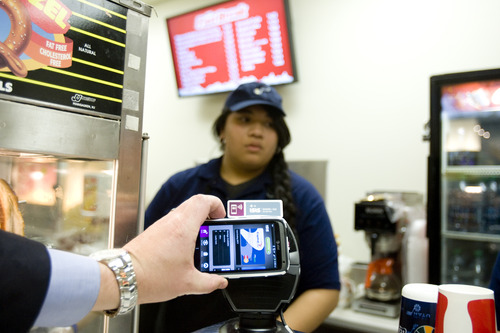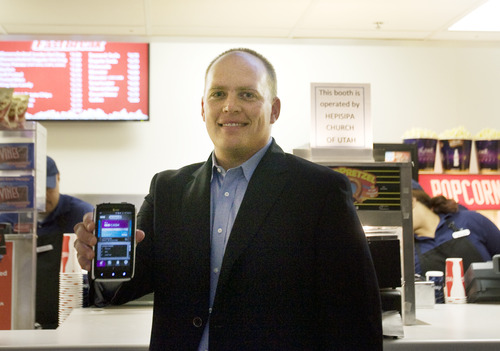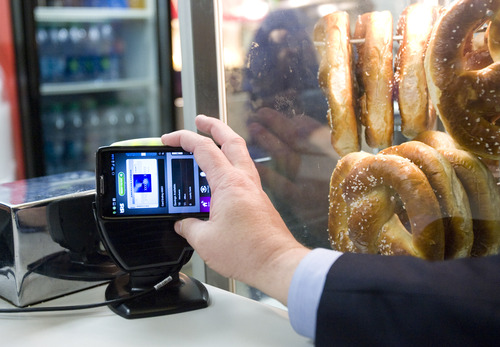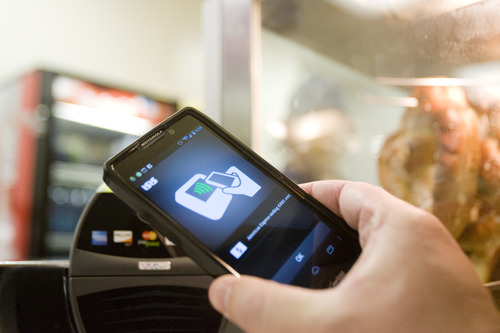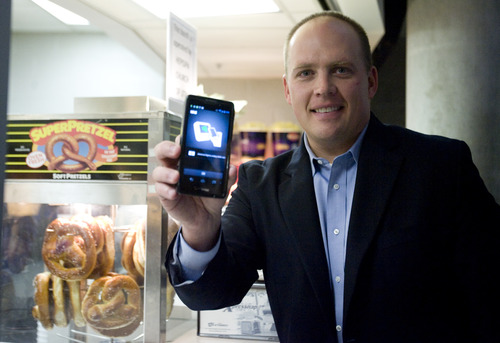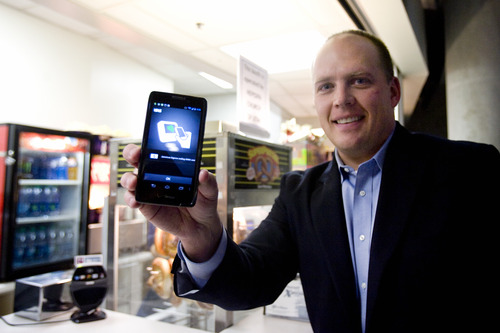This is an archived article that was published on sltrib.com in 2012, and information in the article may be outdated. It is provided only for personal research purposes and may not be reprinted.
To most Utahns, Isis is just a funny-sounding name for something they've seen recently on TV or a billboard. But the companies pushing this mobile electronic-payment system believe it's the future of commerce.
Similar to Google Wallet, Isis (pronounced eye-sis) is a mobile wallet system devised by T-Mobile, Verizon and AT&T in which users buy items in stores with the tap of their mobile phones. It's being tested in just two U.S. cities, Salt Lake City and Austin, but it's planned to go nationwide within six months.
I tried out Isis for a couple of weeks, courtesy of a Samsung Galaxy S III provided by AT&T. There were some positives, but is it going to replace the credit card any time soon? Don't bank on it, at least not without a few improvements first.
Isis works with any smartphone equipped with a "near-field communications" (NFC) chip, a fairly new piece of technology that is included on many Android phones. The iPhone does not have an NFC chip built in, but Isis plans on soon selling an add-on case for Apple's device that includes the chip.
To initiate Isis, you must first visit your wireless carrier's store and have a representative set up the system on your phone, which takes about 10 minutes. Isis is available only for AT&T, Verizon and T-Mobile customers.
An account will be created and a special SIM card will be put into your phone (for security purposes) that includes the Isis technology. A free app also will be installed that you use to make purchases.
You can either set up your account to draw money from a charge card (at this point only American Express or a Visa from Chase or Capital One can be used) or you can feed money into a pre-paid Isis account you create. The new system is not compatible with existing debit cards, but by becoming an Isis user, you instantly get as much as $25 to make your first purchases.
Here's how you buy something with Isis:
When you are at a store that supports mobile payments, you take your goods to the cash register and once they're rung up, you turn on your phone and launch the Isis app. Type in your four-digit passcode and press the "enabled" button, then tap the phone on the electronic reader in front of the cashier, and it automatically makes the purchase.
When I used Isis, it didn't exactly save time because it took me just as long, if not longer, to buy something with the system as it would have to pull out my debit card or credit card and swipe it through a reader.
And it wasn't foolproof, either. The first time I tried it at a Taylorsville diner, the reader kept producing an error code. But after that, it worked flawlessly the rest of the time I used it.
You also can't use Isis at just any store because the retailer has to be set up to take mobile payments. Along the Wasatch Front, about 420 have signed up, which I don't think is a lot considering how many businesses there are in Salt Lake City alone. Also, that list doesn't include major stores such as Target, Walmart and Kmart, or grocers such as Reams or Harmons.
There are however, some upsides to using Isis. Although it doesn't necessarily make purchasing faster, the system does have one big advantage over credit cards. It can draw you to stores with promotions and other discounts.
The Isis app's best feature is that it automatically collects virtual coupons and alerts you to deals at Isis-compatible retailers. To use a coupon, you can just tap the phone to the reader or it can display a barcode on your phone that the cashier can scan.
The potential is that retailers can send new coupons and deals straight to your phone, where they all can be viewed in one application. That can be a great incentive for merchants to use Isis as a marketing tool, although only about eight stores offer deals at this point. (One of the best gives Isis users free rides on UTA trains and buses until Jan. 31.)
The folks behind Isis contend the system also offers more security than using a credit card. One, users have to input a pin number to launch the app. Two, every time the mobile wallet is used, the system scrambles the Isis account security number. Three, when used at a restaurant, for example, tapping your phone on a reader provides more protection than handing over your credit card to a waiter or waitress.
All that said, one of my biggest fears is what would happen if I lose my phone? Not so much because someone who finds it or steals it could go on a buying spree — after all, they would at least need my pin number to use Isis and the account can be canceled with a phone call — but because I would not be able to buy anything until I got a new phone.
So for me, for now, Isis would not be my only method for purchasing things. You would always need a credit card handy for back up.
But as time goes by, the technology is refined and more retailers come on board, Isis could make more sense for more consumers. Until then, it's still in its infancy, and there is a lot of potential that needs to be unlocked before the system becomes the preferred way to shop.
Google+: +Vincent Horiuchi —
About Isis
What is it? • It's a new technology that allows users to purchase goods with their mobile phones by tapping the device on a reader in the store.
Who can get it? • Customers of Verizon, AT&T or T-Mobile who have a smartphone compatible with near-field communications.
How much does it cost? • It's free, and it even gives first-time users up to $25 for their first purchases.
How many retailers participate? • About 420 along the Wasatch Front, including McDonald's, Foot Locker, Megaplex Theaters and Whole Foods.


